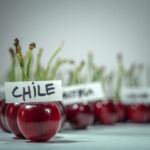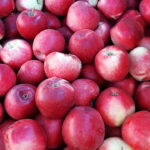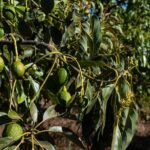Asian growth offsets Chilean fruit export dip
Chilean fruit exports fell by 2.1% in the 2011-12 season with stagnant shipments to North America and a 9.3% fall in European purchases. However, the total decline would have been much greater if it weren't for a buoyant trade with East Asia. The Chilean Fruit Exporters Association (ASOEX) and the Chilean Federation of Fruit Growers (Fedefruta) held a press conference in Santiago yesterday to discuss the past season and expectations for the upcoming campaign. 
ASOEX president Ronald Bown pointed to an "interesting and constant" upturn in Chilean fruit exports to Asia, with shipments jumping 10.7% in 2011-12 to 380,718 metric tons (MT).
While this figure is not even half of U.S. purchases of 863,747MT - which fell slightly by 0.1% - it is still more than shipments to England and the Netherlands combined.
Bown put particular emphasis on export growth of 22.8% to Hong Kong and the Chinese mainland of 168,598MT and a 30.3% growth in shipments to South Korea, hitting 62,758MT.
"It’s very important to highlight how Asia has grown with respect to Europe - with parts of the world in crisis like Europe, exporters and producers producers have read the market a bit and we have changed our destination. This is very important," added Fedefruta president Cristián Allendes.
Shipments to the third largest Asian destination Taiwan fell slightly by 6% to 61,529MT while the fourth key market Japan notched a 6.3% rise to 32,504MT. India recorded a sharp fall of 23.7%.
Chile's sixth largest Asian market is Indonesia, which has introduced regulations that block fruit imports in the main Tanjung Priok port in Jakarta. Other fruit exporting nations such as the U.S., Canada, Australia and New Zealand have achieved Mutual Recognition Agreements (MRAs) with the country to bypass the rule, and Bown expects Chile will soon join this list.
"We are in direct conversations, through the Agriculture and Livestock Service (SAG) and the Directorate of Economic Relations, with Indonesian authorities with the objective of reaching the same facilitation," he said.
"Obviously not entering in Jakarta is a competitive problem and much more costly as you have to go more than 1000km from another area.
"We hope to solve this problem shortly. We've had significant support in the last visit that Ministry of Agriculture conducted - we expect that before the next season we can resolve the problem in Indonesia."
Grapes and cherries were the main drivers of growth in Asia with rates of 10.8% and 62% respectively, as the top and third ranked Chilean fruits in Asia. Apples are the second-biggest export product but shipments for the fruit fell by 12.5% to 88.440MT.
Growth was also strong for kiwifruit, plums and nectarines, while from a lower base several products such as blueberries, walnuts, avocados and pears registered phenomenal growth.
European decline
All of Chile's major European markets bought less fruit from the South American country last season, with the biggest falls seen in Turkey (-33%), Russia (-19.7%), France (-16.8%) and Germany (-10.8%).
However, the biggest markets of the Netherlands and England only registered minor falls of 3.4% and 2.8% respectively; these two markets account for more than half of European purchases of Chilean fruit.
The majority of the extra table grapes sent to Asia during the campaign were a result of lower shipments to Europe, which fell by 10.3% to 191,225MT.
Grapes and apples account for more than two thirds of Chile's fruit exports to Europe, and the latter also registered a decline in shipments of 23.7%. These two fruits skew down the export result in Europe, along with pears, plums and walnuts, but several fruits did not perform too badly.
Chile's third largest Europe-bound category kiwifruit increased by 4.4% and avocado shipments rose by 36.4%, while rises were also seen for blueberries (32.6%), oranges (92.7%), cherries (3.2%), lemons (32.2%) and pomegranates (8.8%).
U.S. 'practically the same'
Chile's total fruit shipments to the U.S. were very similar year-on-year in 2011-12, despite a sharp fall of 9.8% grapes, which represent around 41% of the total deal.
Lower grape shipments were more than offset by a 34.5% rise in apple exports and a 55.1% jump in orange shipments. Clementines and mandarins also joined the U.S. citrus boom with upturns of 10.8% and 49.2% respectively.
In contrast to Europe, avocado sales in the U.S. were down by 7.7% and the same can be said for blueberry volumes which dropped by 5.2%. Asia's rise in cherry purchases continued to be at the expense of U.S. purchases, which fell by 21.8%.
The Port of Philadelphia continued to be the largest port of entry by far receiving 349,279MT of Chilean fruit, followed by Los Angeles (208,090MT) and the Port of Wilmington (109,968MT).
Other markets
While Asian demand for Chilean fruit has grown the Latin American market still remains ahead of it, with 526,437MT of fruit exported to the region during the 2011-12 season.
If Asia's growth rate was constant and the Latin American market stayed still (which it basically did in 2011-12 falling by 0.2%), it would lose this position in four years' time.
For now though, Chile's fourth and sixth biggest fruit export markets are on its own doorstep in Colombia and Brazil, and the latter's purchases grew by 11.9% in 2011-12. Colombia recorded slight growth of 0.9% reaching 115,486MT.
Ecuador also showed strong prospects rising 4.5% to 75,993MT, in contrast to its neighbor Peru which received 14.2% less Chilean fruit at 55,828MT.
Mexico received less Chilean fruit (-5.9%) and Venezuela showed steady growth of 12.8%.
With the exception of apples, pears and grapefruit, Chilean exports in Latin America were up across the board, with grapes, kiwifruit, stonefruit, almonds and avocados as standouts.
Elsewhere in the Americas, Canada's Chilean fruit purchases rose slightly by 0.5% to 47,804MT, placing it at around the same level as Mexico and South Korea as a fruit export destination.
A sharp decline of 17.7% was seen for Chilean fruit purchases in the Middle East at 123,288MT, driven by a 19.8% in the dominant fruit bound for the region, apples. Sharp declines were also seen for oranges (-40.2%), walnuts (-76.6%), lemons (-52.5%) and almonds (-43.4%).
Season expectations
Allendes said due to the lack of extreme weather events like frost or problematic rains during flowering, the upcoming spring-summer (Southern Hemisphere) season was looking good, although some areas were suffering with water problems.
"The zone most affected by the drought is the IV (Coquimbo) region and part of the V (Valparaiso) [region] - there is definitely less snow and it is still not clear how much less water this will mean," he said.
"Growers today are better prepared than before in the sense that in recent years – we are now in the third year of drought – they have been preparing more with their canals and issues of irrigation in the fields, but there will still be a reduction in the north-central zone.
"In the south-central zone it appears there will not be any problem."
Bown said labor shortages would continue to be an issue with the country close to full employment and competition with the mining industry for harvesting. Allendes added there was a need for more flexible and practical visa laws to attract foreign workers to the fruit sector.
He also pointed to the risks of Chile's dependence on the mining industry and commodity prices, urging the government to promote policies that don't "put all the eggs in one basket".
"For every US$1 million of revenue in the mining industry it generates five workers, whereas we generate 150," he said.
Exchange rates were also a hot topic at the meeting given the 9% fall in the U.S. dollar's value against the Chilean peso of the last year, however Bown said the Central Bank could not intervene much more than it has in the past when it comes to buying up reserves of U.S. dollars.














































